
︎︎︎IN BELIEF IS POWER
HRISTINA TASHEVA, 2018.
130 mm x 195 mm
Pages: 176
Paper: 300g Original Guardsman Red, 140g cyclus offset
Offset printing
Thread sewn binding
Concept, photography and edit: Hristina Tasheva
Design: Velina Stoykova, Poststudio
Translation from Bulgarian: Zornitsa Hristova, Vesselin Petrov
Mentorship: Martine Stig
Being a Bulgarian
immigrant in Western Europe, I know how important the welcoming and friendly
attitude of the local people is for the newcomers. How great my indignation was
when Bulgaria, my home country, the place of origin for two million emigrants, tolerated
nationalist groups to hunt down Muslim refugees who were illegally crossing
E.U.’s external border with Turkey.
The articles in the
Western media informing about the activities of the Bulgarian nationalists
raised a lot of questions for me. I am trying to express these with the present
project: what provokes one’s fear of foreigners; what is the life and history
of the local population who live near the border, where different political
interests intersect; what is the “Bulgarian” identity exactly made up of; how
does the border region reflect what is happening across Europe; is there a
"beautiful" nationalism that would help a vanishing nation preserve
itself (Bulgaria is said to be the fastest disappearing nation in the world);
and, finally, what connects us as people?



The title of the book
is borrowed from an inscription from a small chapel in the border area, built
in honor of St. Marina: “In faith is power”. I have changed it to “In belief is
power” in order to address the relationship of belief not only with religion,
but also with different political and economic systems, as well as the
consequences of these relationships.
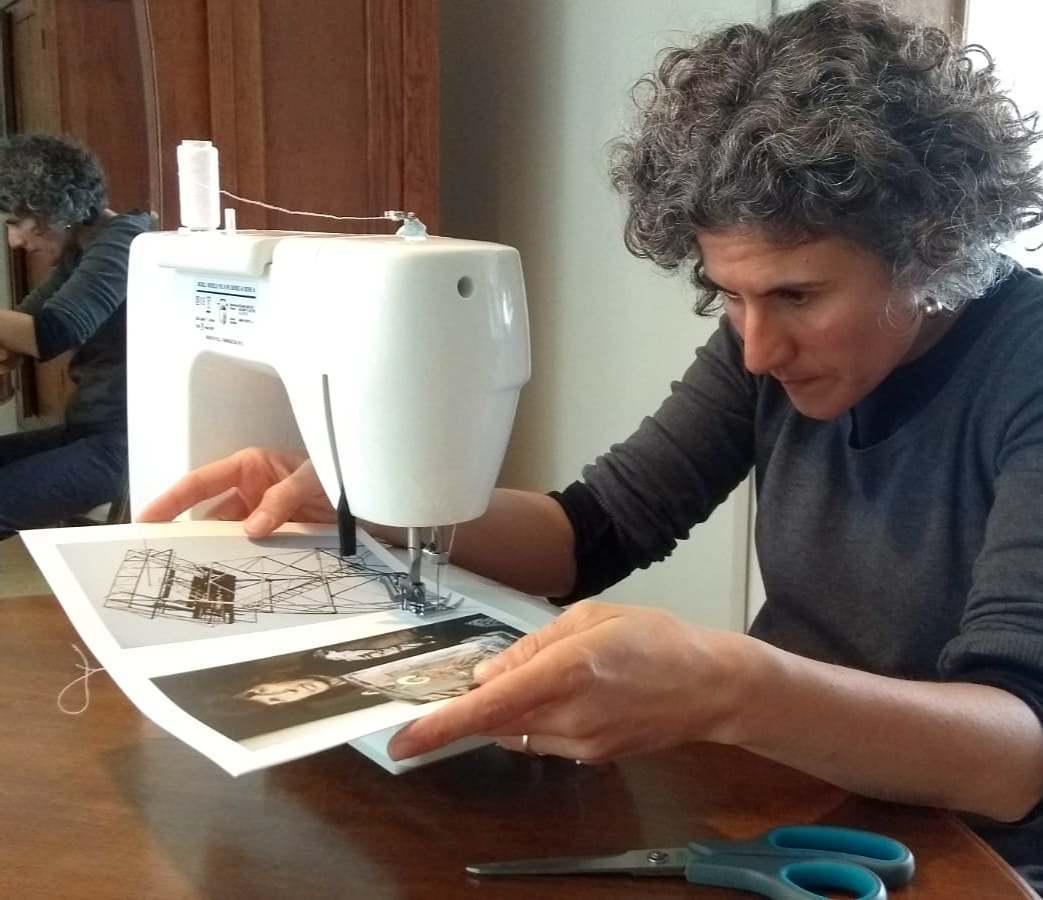
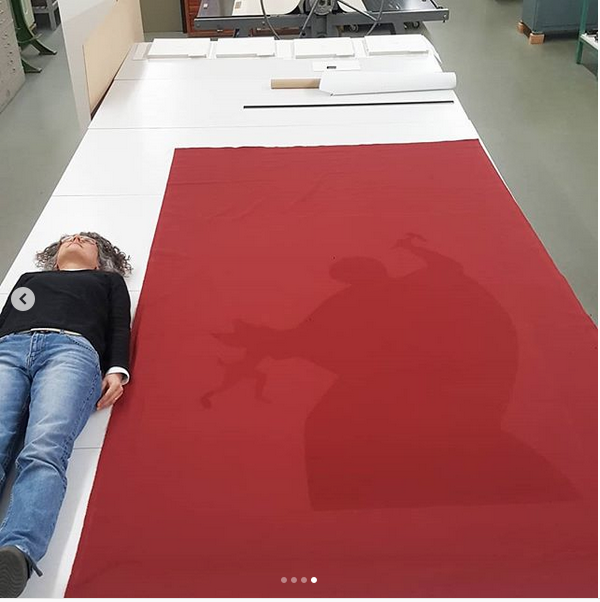








I have worked on the project since 2015, and on the book - since the summer of 2017.
Strandzha is not a direct focus of the book. Some of the questions I have raised are as follows:
Who or what is it that provokes fear towards the foreigner; what is the life and history of the local community which lives near a border at the crossroads of different political interests; what is the essence of Bulgarian identity; in what way does the period of transition communicate that which is ongoing in Europe; is there such a beast as ‘beautiful’ nationalism which could support the self-preservation of a disappearing nation (the Bulgarian nation is one of the fastest melting ones); and what is it that connects people?


It is important to note that the border with Turkey where the Bulgarian nationalists are ‘hunting’ migrants, is not only a Bulgarian border but an EU border. The places which I explored and visited are parts of the Strandzha Mountain, but Strandzha is not a direct theme in the book.
The impulse to go there came when I found out from Dutch media about the Bulgarian nationalists along the border. This discovery resulted in a feeling of shame. Instead of focusing on the vigilantes, I ask the question of what evokes nationalism while taking Strandzha as a case study. My impression is that nationalist groups from all over the world are already advertised enough in the media through discussions about their ideology and I do not perceive freedom of speech as the means to give a stage to criminals so that they can share their views. While I was doing my research, I read Kapka Kasabova’s book “The Border” and was completely entranced by the life and the people of Strandzha in this border region. Through my book, I am trying to introduce the wider audience to the issues on the daily agenda in that particular region. I am asking how are the problems in this part of the continent different, considering the history of Bulgaria as part of the Ottoman Empire (1396–1878) and the subsequent communist regime (1944–1990) which are specific to the country, while inevitably reflecting on what is happening all over Europe. Here I found Ivan Krastev’s book ‘After Europe’ very helpful.
While visiting Strandzha, one of the locals told me that there were no nationalists among them. I did not meet any of the actual vigilantes at the border, nor any of the illegal immigrants from other countries. In the book, the nationalists are presented through images from the internet. It soon became clear that many of the locals are the children of migrants themselves. Comparing the information one gets from the media with what I actually witnessed is what shaped the project. It was clear to me that the problem is complex but overall, I tried to convey my experience from this exceptional place, Strandzha, where traces of past historical and political periods can still be found. My purpose was to add nuance, new information to what was already known, using the advantage that I was born in Bulgaria, I speak the language and I am aware of the history, traditions, problems originating from the politics conducted in the country.
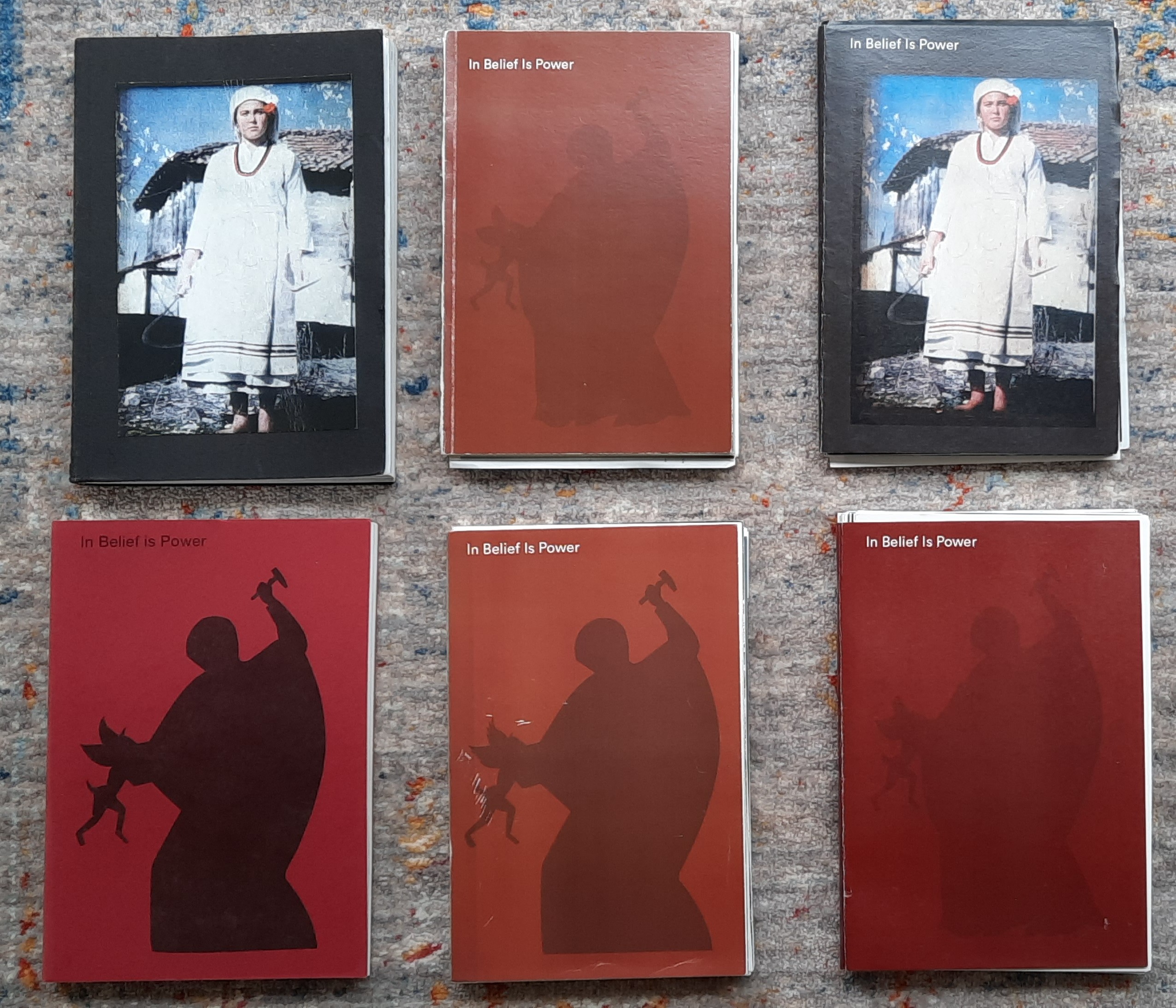

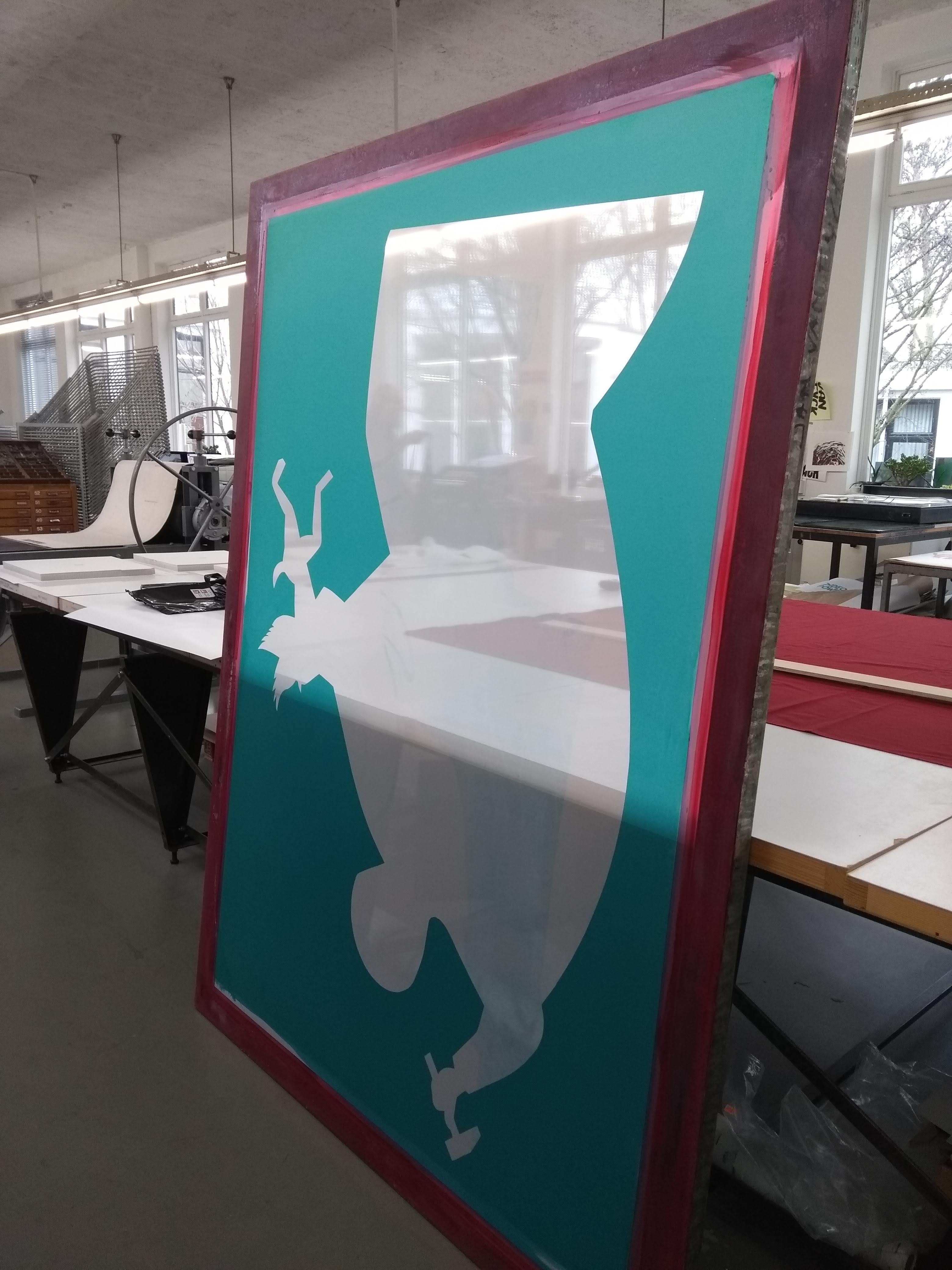
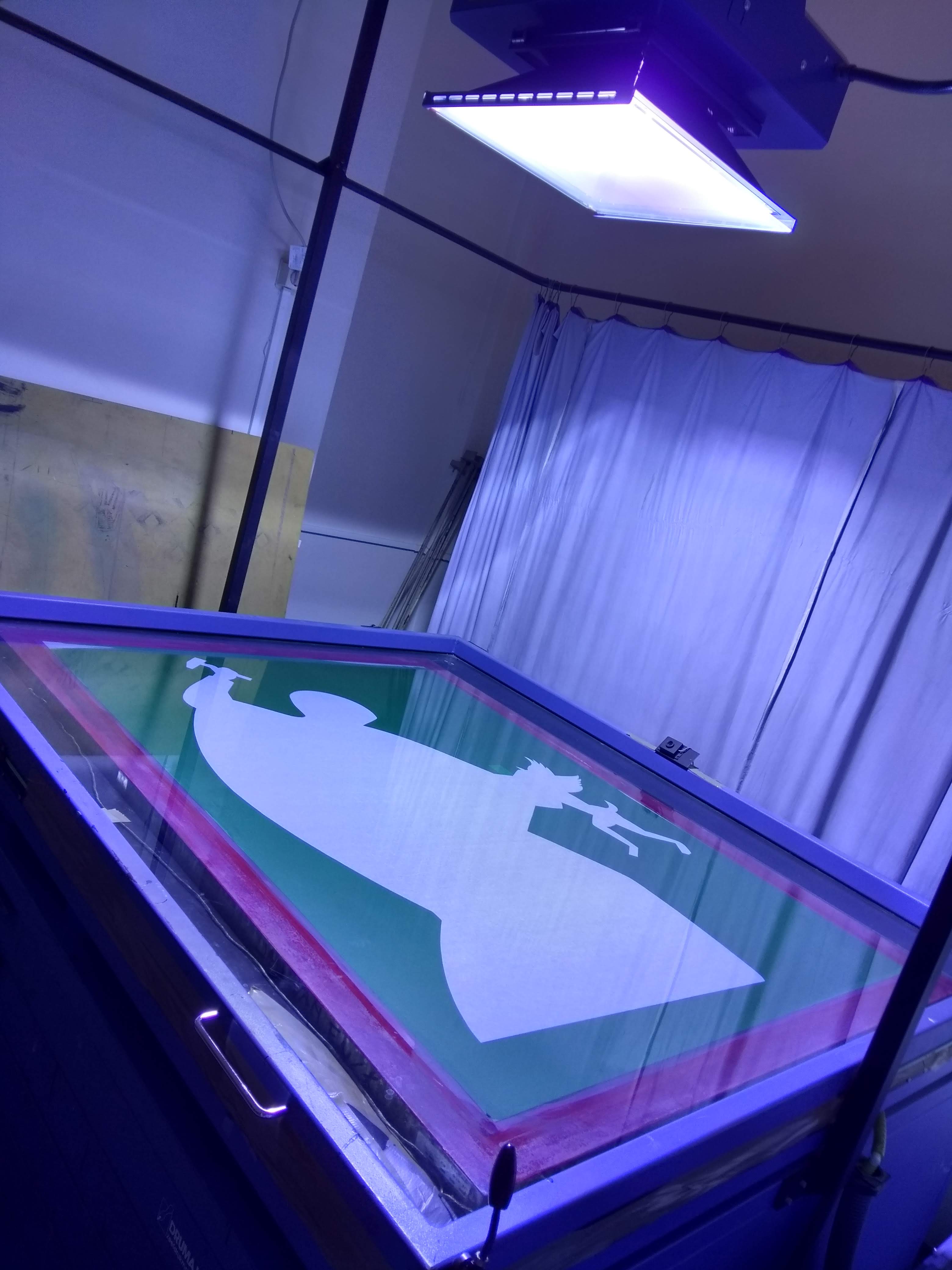
The handwritten text in Bulgarian (numbered and translated in English at the end of the book) appears as visualalongside the photographs and does not explain them but is there to add another layer to the narrative. For the most part, the text stems from conversations on daily life topics that I had with locals and are representative of their way of thinking. The fact that the texts appear in a hand-written form is also a reminder of the subjectivity of the material and the experiences gathered from a first-person perspective, as well as the attempt at a horizontal approach towards the reader – I am not a person who preaches.
The narrative in the book unfolds on different levels – history, identity, political ideology, propaganda, tradition, religion, male and female roles in society; the subject of sacrifice on a religious level subtly relates to politics.
Propaganda plays a major role in politics and is used to provoke belief and exercise power over people. That is why, in the edited material, the feeling of theater, dressing up, and posing is dominant, as is the mixing of historical periods and their influence over the life of the local population.


Most conversations happened along the way. I formulated my questions with respect to the situations. Often, a simple question might lead to interesting stories and material for new research. These elements were designed to place the local culture in a wider context and show that this region of the map is not isolated and that the actions of one or another world power have consequences for everyone. The problems we are facing on a world scale concern each and every one of us no matter how isolated they might seem geographically.




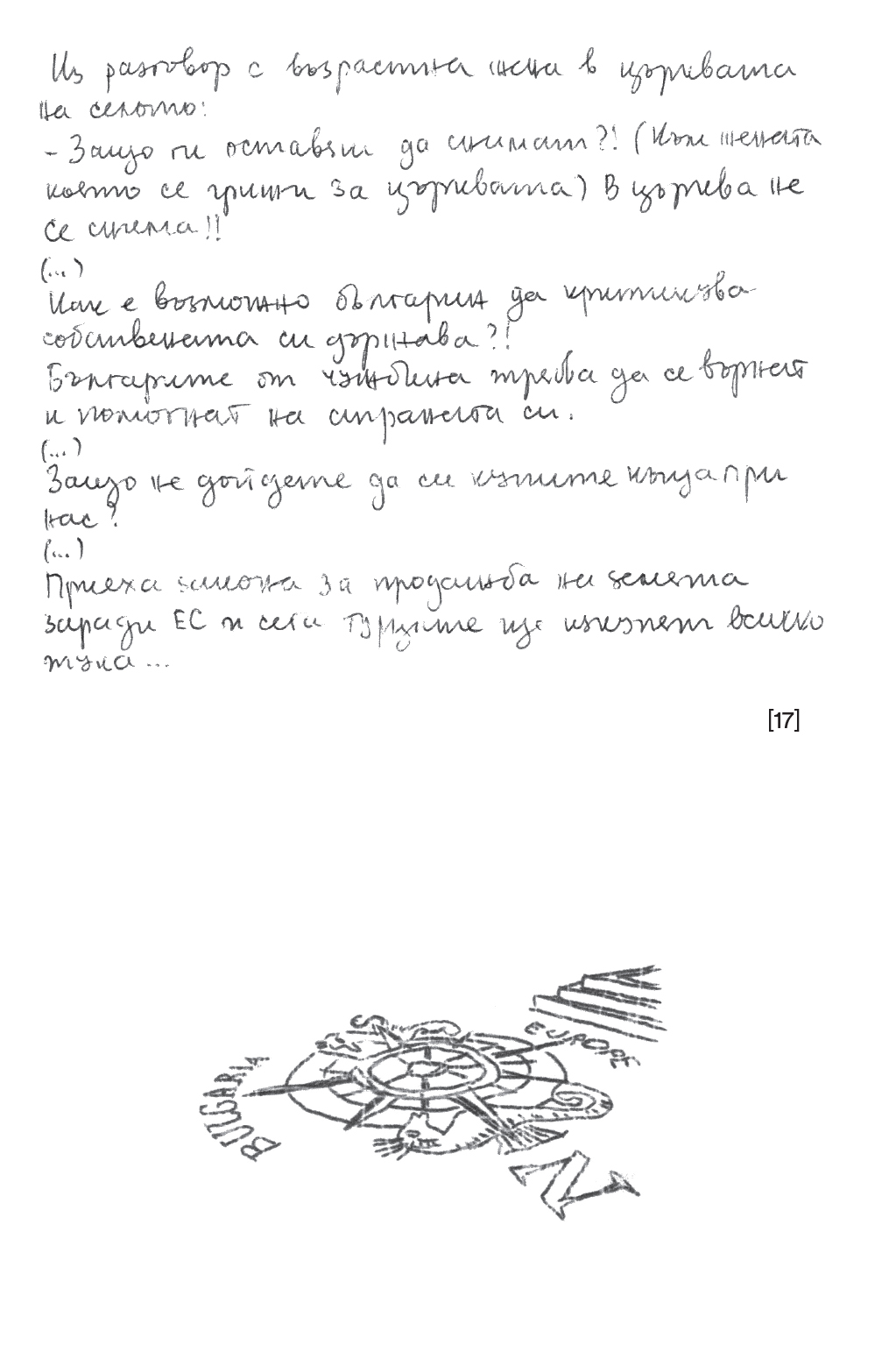


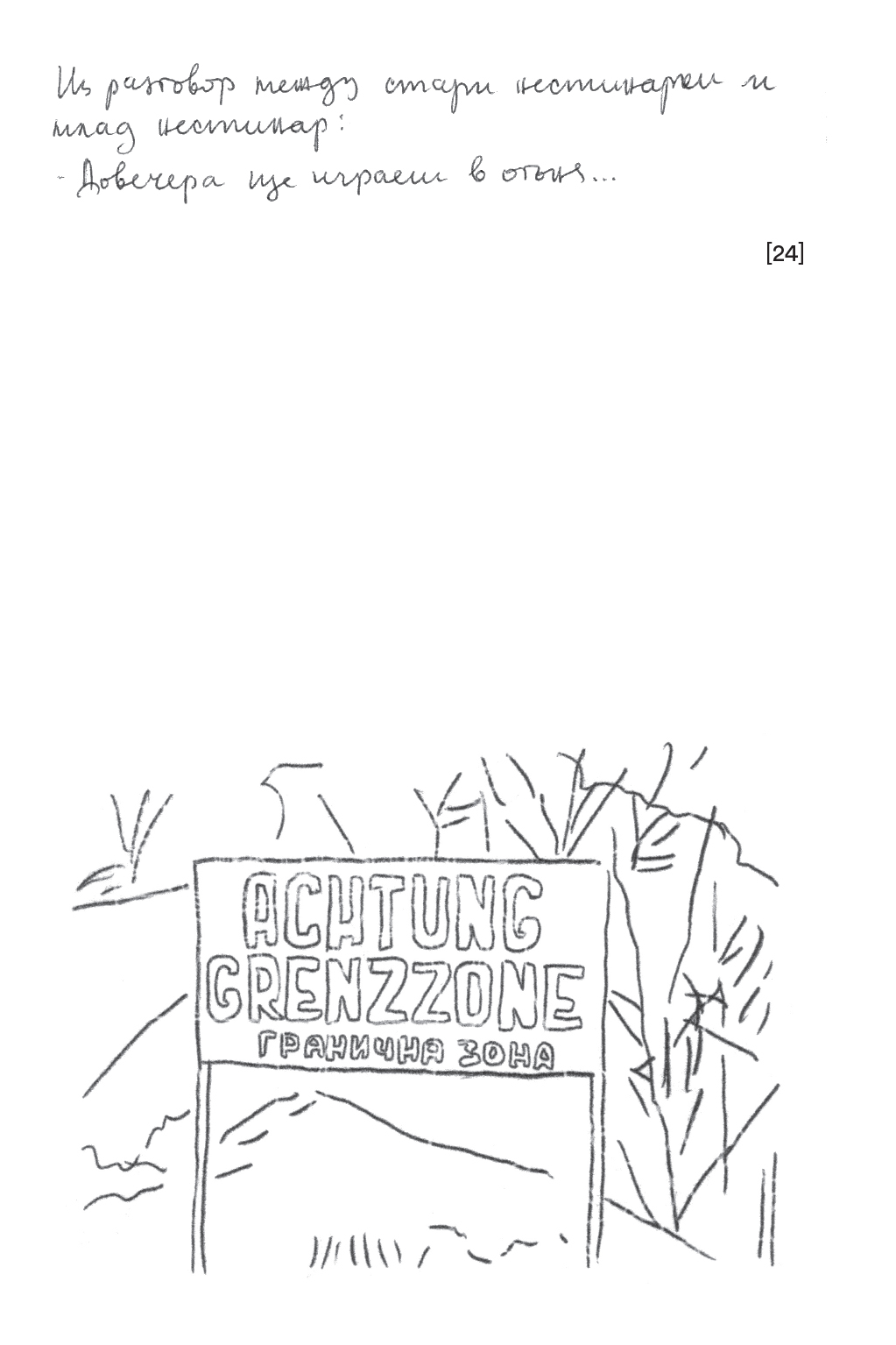
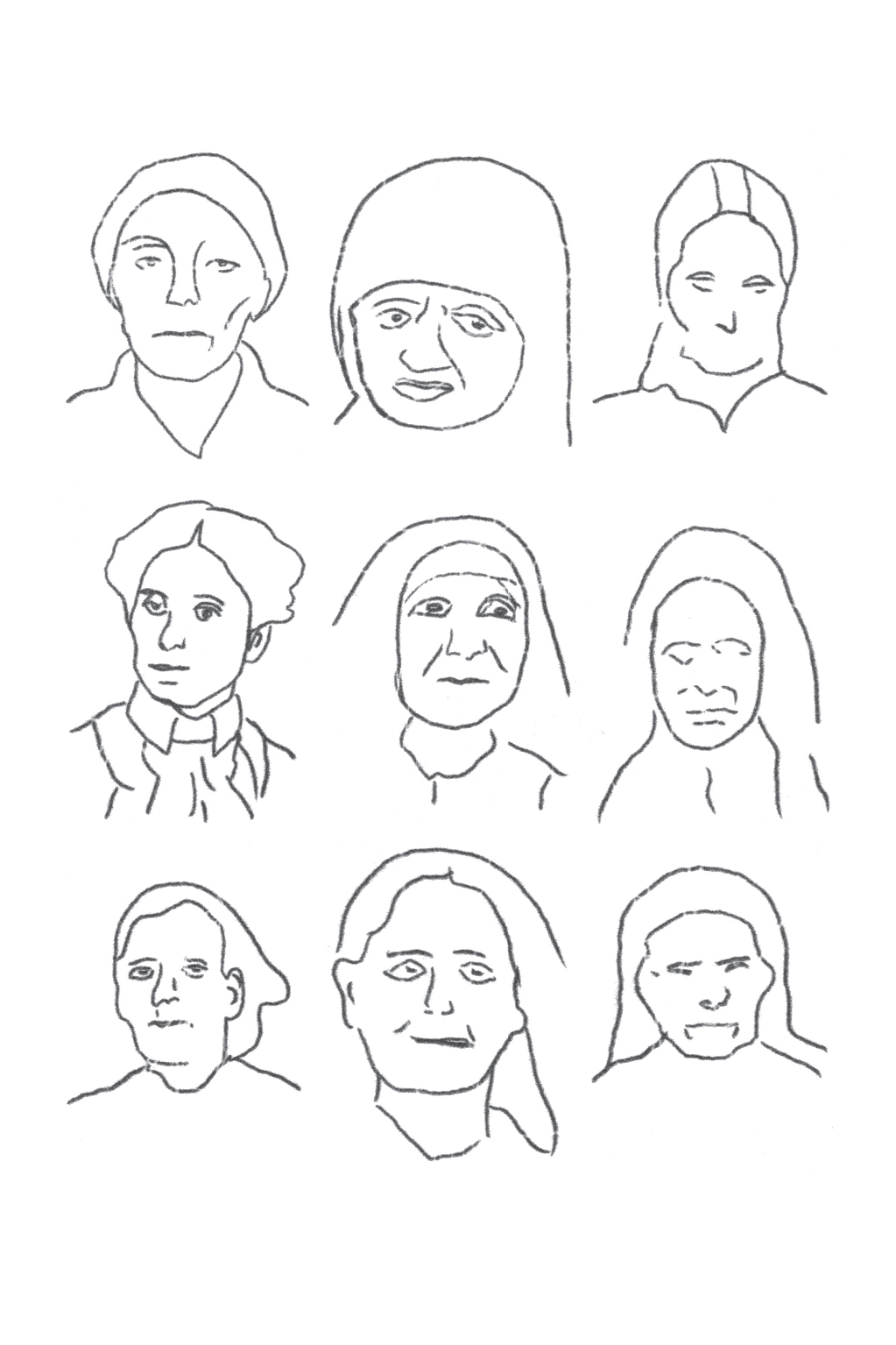
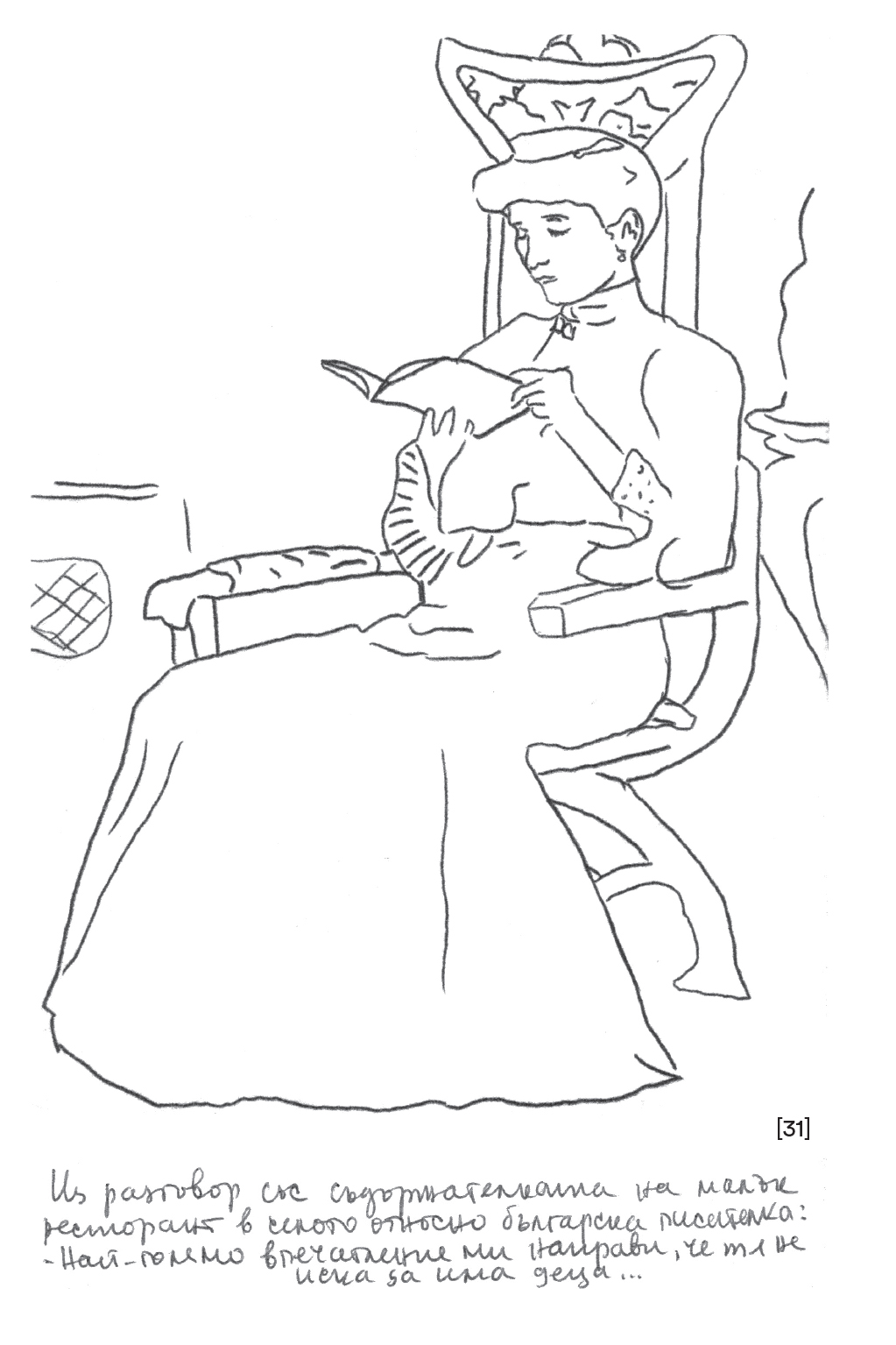

In regard to the male and female roles in the book, I was influenced by Virginia Woolf’s “Three Guineas” published in 1938, a time in Europe marked by the rise of fascism. In it, she answers the question asked by a certain influential man - “What can women do to prevent war?” If war is a product of ‘typically male’ traits such as violence, rivalry, and dominance, what are the female qualities that could prevent the respective violence, rivalry, and strive for dominance in social life? When I was going through the material, which I collected from the border region in Bulgaria, I intentionally asked myself the question “What could the male and female role be in my book?” which helped me edit the publication in two parts – in the first one I have put the emphasis on male activities, and in the second – on female activities. This is somewhat hinted at by the repetition of photographs of the border fence, of one and the same place where events of different nature can occur. The female part, on the other hand, is represented by the image of St. Marina that is on the cover and personifies the Thracian mother-goddess, a strongly venerated saint in Strandzha. According to the folk tales, when God wanted to punish the devil she opposed him because she decided she can handle evil herself. That is also why she is often represented holding a hammer. It is also important to mention that some of the Christian saints and feasts in Bulgaria have pagan roots, like fire-dancing for example. Thus, the front cover portraying St. Marina together with the title ‘In Belief is Power’ becomes a poetic attempt of mine to provoke a different view on what our beliefs are based on, and hints at the constant play of religion, politics, and propaganda in culture.




I also asked myself questions like what was the way of life so close to a strong symbol of power, such as the border fences; how does this influence the psychology and the everyday life of the people living there; the interactions of the locals with the border police; the border as an intermediary zone, two worlds, different cultures and languages, a line which has moved more than once in accordance to the political situation despite the consequences to the local population.
By combining images of different kinds and origins I have tried to explore the complex questions regarding the fear of foreigners, the life and history of the local population, and what exactly does Bulgarian identity consists of. Besides that, in the context of ‘In Belief Is Power’ by pointing out the origin of the images in the index, I give the reader the opportunity to widen her/his knowledge and to start her own research.
In the Netherlands the book was nominated for the Unseen
Dummy Award 2018, it was in the long list of the Dutch Photobook Award and
presented at PhotoQ Bookshop and Prospects & Concepts as part of Art
Rotterdam. Merel Bem, Arno Haijtema en Mark Moorman selected ‘In Belief Is
Power' as one of the ten most beautiful Dutch photo books of 2019 for the Dutch
newspaper ‘de Volkskrant’.
By invitation of the
Bulgarian platform for photography books PUK, ‘In Belief Is Power’ was
presented in a conversation with the curator Nadezhda Pavlova in Struktura
Gallery in Sofia (Bulgaria). The Bulgarian national television and radio, Radio
VOX and the newspaper Dnevnik broadcasted interviews and published a text about
the project. At the end of 2018 ‘In Belief Is Power’ was part of a group
exhibition in Contemporary Space (Varna, Bulgaria) and in September 2019 took
place the solo exhibition of the project at the Synthesis Gallery (Sofia).
‘In Belief Is Power’
also won the Full Contact 2018 Award at SCAN Tarragona Festival in Spain, and
it has been nominated for the PHE19 Best Photography Book of the Year Award
(Spain), Photobook Showcase in Singapore and Foto Wien Photobook Award
(Austria); selected by the Calvert Journal for one of the eight best photo
books of 2019. At the beginning of 2019, the project was shown in a solo
exhibition at EEP Berlin’s Gallery Space. In 2020 followed the group exhibition
In belief is power, curated by Youri Appelo at POST_ Arnhem, the Netherlands.
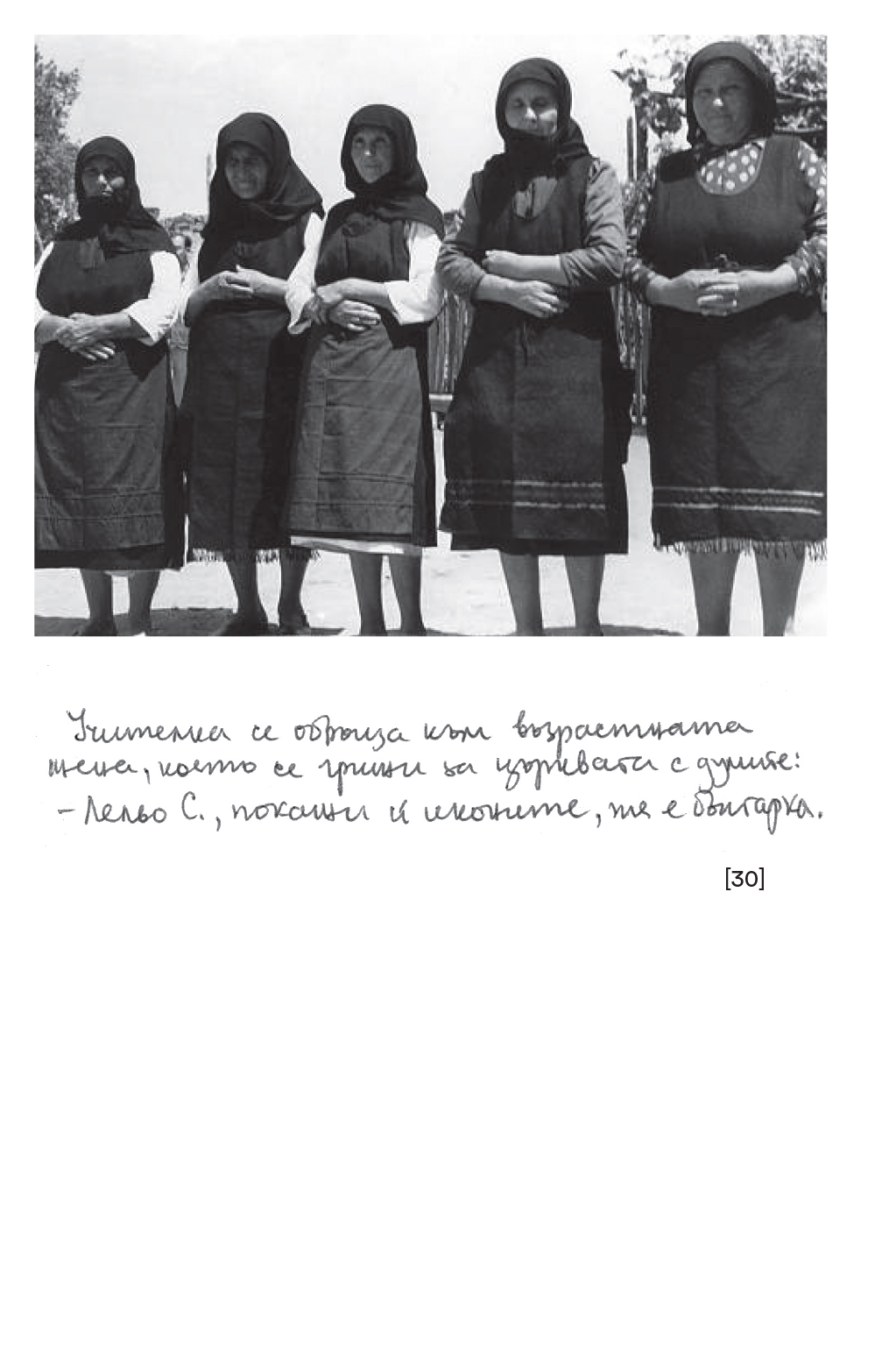

Hristina Tasheva (1976, Bulgaria) graduated from Gerrit Rietveld Academy in Amsterdam and earned her MA in Photography at AKV St. Joost in Breda, the Netherlands. As an Eastern European living in Western Europe, migration, identity, and belonging have been central themes in her work. Using photography, text, and performance, Tasheva develops most of her projects through photobook format. Her publications have appeared in exhibitions all over the world and shortlisted for several awards. Her most recent book, In belief is power (2019), arose from the outrage at the way her home country Bulgaria gave nationalists free rein in the ‘hunt’ for Muslim refugees from Turkey. Combining archive and contemporary photographs, drawings, and text fragments, Tasheva weaves together history and current events and investigates the influence of ideologies, power and propaganda on present life in a border area. The Dutch newspaper ‘de Volkskrant’ selected the publication In Belief is Power as one of the ten most beautiful Dutch photo books of 2019. In 2020, Hristina Tasheva became the recipient of the Mondriaan Fund Stipendium for Established Artists.
© History in Between, 2021This project is part of the Cultural Calendar of Sofia, Ministry of Culture and Sofia History Museum.
Connect:
︎ ︎ ︎
„История помежду“ ("Проект за музейни намеси в РИМ, София") е съвместен проект между Фондация „Изкуство – Дела и Документи“ и Регионален исторически музей, София, подкрепен Календар на културните събития на Столична Община.
History in Between (Project for interventions in the Museum, Sofia) is a collaboration between the Art Foundation - Affairs and Documents, and the Regional History Museum of Sofia. It is supported by the Calendar of Cultural Events of Sofia City.


